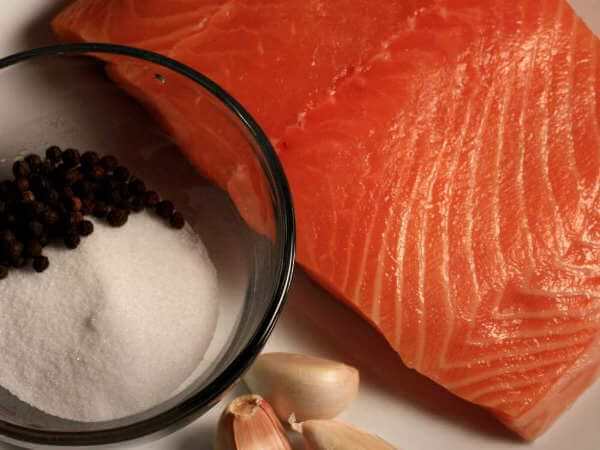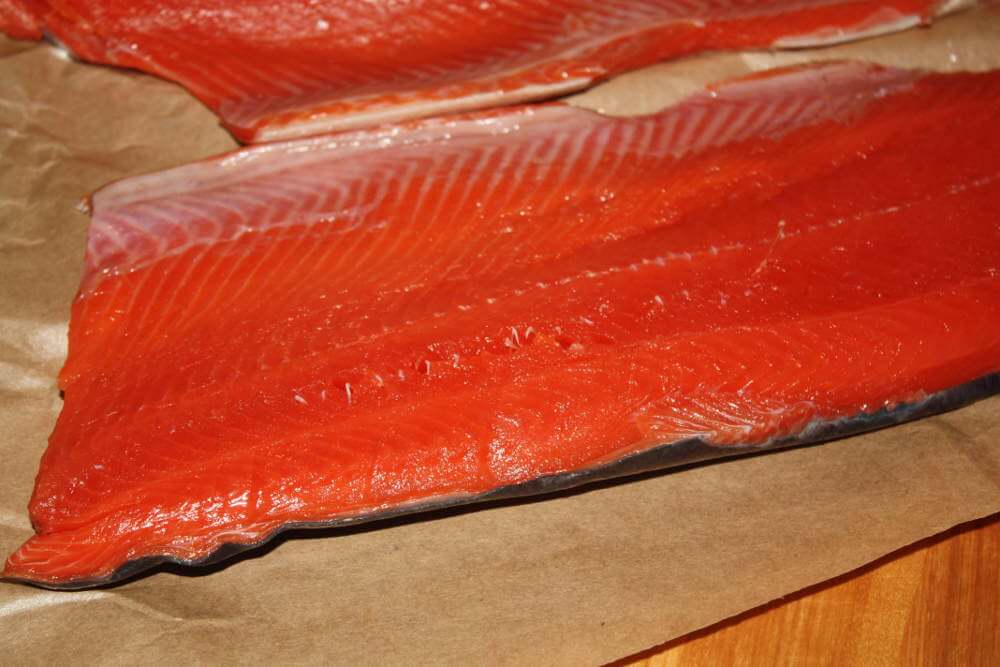Tips for Buying Salmon For The Smoker
When buying salmon for smoking, you need to know that the type of salmon you get, its freshness, and its oil content all will affect the final flavor and texture of the smoked fish.
The oil content, the texture, and the firmness of the flesh varies from species to species, so when buying salmon, knowing these differences will enable you to create the perfect smoked salmon!

Oil Content Adds Flavor and Moistness
The higher the oil content, the more flavorful, buttery and moist the finished product will be. Some people prefer a lightly flavored salmon, so for them a low oil content salmon would be the right choice, like the Chum or the Pink salmon. For those with the desire for a richer flavor, King or Sockeye would be the best choice.
Freshness Is Imperative
Freshness is the most important aspect of buying salmon, as it is with any fish. All fish is delicate and it spoils quickly after being killed.
If not immediately flash frozen or kept on ice, micro-organisms will quickly multiply in the flesh, causing a strong fishy odor and a mushy texture. You do not want to eat fish that's less than perfect.
If the salmon still retains the head, check the eyes. They should be bright and clear, with no signs of cloudiness. The skin should also be bright and shiny, and the flesh should be clean and even in color.
Much salmon is sold in sealed packages in the meat case, and it's impossible to know what you're getting unless the package is opened. When buying salmon packaged like this, you can test the flesh for firmness and freshness.
Press your finger into the fish. If it's fresh, it will spring back to its original shape…if it doesn't spring back, it may be spoiled or partially spoiled.
If you're not sure of the freshness, ring the butcher and ask that the package be opened so you can smell the salmon. The butcher should be happy to do that for you. If the butcher won't open the package for you, talk to the store manager or shop elsewhere.
Buying Salmon - Available Species
When you are buying salmon, you may see many different varieties. Many of the types of salmon go by more than one name, so it can get confusing. Here are some of the types of salmon you may find, along with a description of their characteristics.
Atlantic Salmon
Most Atlantic salmon you'll see is farm raised in ocean pens or cages. These salmon are on a special diet designed to enhance the oil content and the color of the flesh.
Canada, Chile, and the United Kingdom are major producers of pen raised Atlantic salmon. The flesh of Atlantic salmon is pale to bright orange in color. The moderately firm and oily flesh is mildly flavored.
Chinook Salmon
Chinook salmon also goes by the name King salmon, and is the largest of the salmons, at times reaching sixty pounds and more!
The flesh of this salmon is rich and buttery because of the high oil content, and has a delicate texture. King is also one of the most flavorful of the salmons. The flesh is usually a deep red color.
Sockeye Salmon

Also known as red salmon and blueback salmon, this fish is second to the King in oiliness and flavor. Prized in Japan, a high percentage of these fish are exported to that market.
Like King salmon, sockeye usually has a deep red flesh and has a very good flavor. The flesh is somewhat firmer than that of the King salmon.
Coho Salmon
Coho salmon are also called Silver salmon. Even though the oil content of this fish is lower than that of the King or the Sockeye salmon, it still has a very good flavor. The flesh is medium-firm and is can be dark reddish-orange to pale orange in color.
Pink Salmon
These salmon are named for the pink color of their flesh. You'll also find them called humpbacks or humpy salmon, names given for another visual feature of this fish. This salmon has a low to moderate oil content and a light rosy pink colored flesh.
The flavor is light and delicate with a tender texture. This salmon is one of the most abundant of all the salmons, so the price is usually reasonable.
Chum Salmon
This salmon has several aliases… Silverbrite salmon and Keta salmon are two common names. A third is Dog salmon, due to the large teeth this fish grows during the spawn.
Chum salmon has a flesh that is variable in quality, usually pale in color, and coarse and firm in texture. This one is less flavorful than the others. It has the lowest oil content of all the salmons.
Pacific Salmon

Pacific salmon is a generic term and can include any of the salmons other than the Atlantic salmon. When you see fish labeled "Pacific salmon" in the seafood case, ask the fish monger to tell you which species it is so you'll know the flavor and texture characteristics of the fish, and how it would be best prepared.
Health Benefits Of Salmon
Many people are buying salmon for the health benefits provided by including the oily fish in their diets. The salmon flesh is rich with oils that contain Omega 3 fatty acids. Omega-3's are required in the diet, and are touted as having great health promoting properties.
Canned salmon that contains the softened bones of the fish is a great source of natural calcium. The pressure cooking process renders the bones soft and edible, and easy for the human body to absorb.
Salmon is a also a rich source of B vitamins and high quality protein.
- You Are Here: Home >
- Salmon Recipes >
- Choosing Salmon For The Smoker

